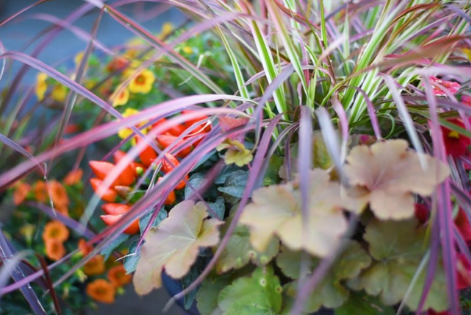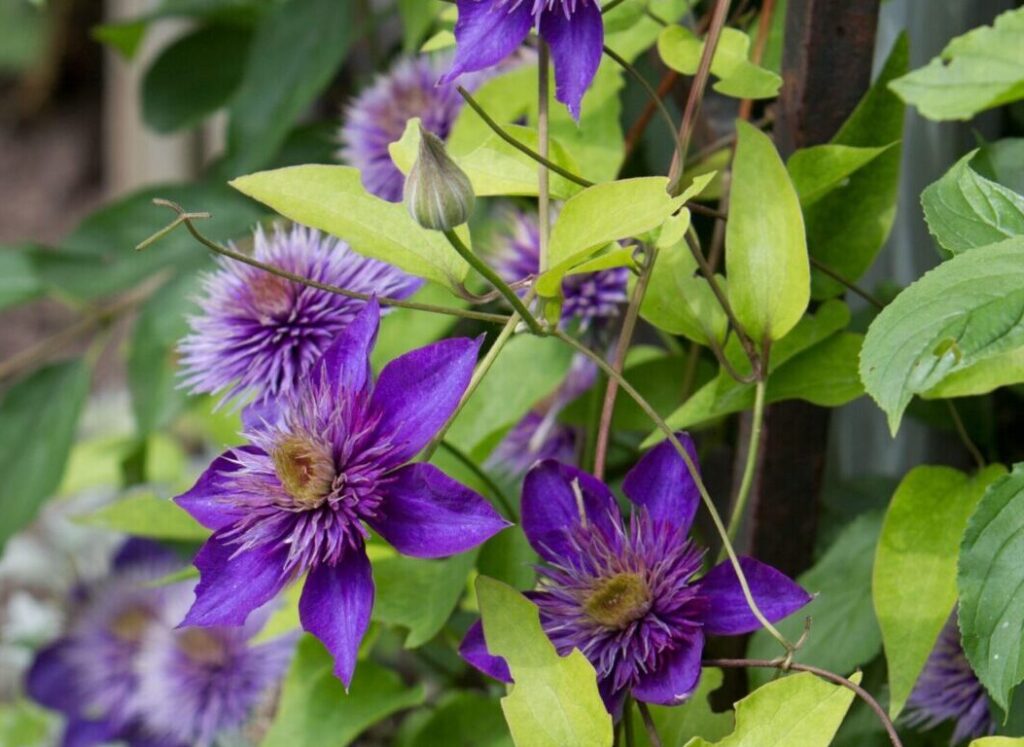
One disease, tomato blight, is a scourge that’s responsible for many gardeners’ woes. This is a disease caused by the fungus Phytophthora infestans. Right now the rainy and humid weather is resulting in prime conditions for the development of blight.
First Step – Be sure it is Tomato Blight (aka late blight)
People often confuse blight when it’s actually something else. Here’s a great chart showing diseases on tomatoes from OMFRA.
Identification of Late Blight
- Rapid and severe defoliation occurs
- Pale green-to-brown water-soaked spots develop on the leaves; lesions enlarge rapidly and become brown to purplish-black
- A grey-to-white mouldy growth may develop on the underside of infected leaves, especially under conditions of high humidity
- Brownish cankers on leaf petioles and stems may girdle and kill the plant
- Fruit lesions are firm, rough, and greasy-looking, with greyish-green or brown blotches
Tomato diseases can be spread in many ways, and knowing what they are can supply simple solutions. Here’s an excellent article from the USDA – Tomato Diseases and How to Stop Them:
The author describes three pathogenic diseases: septoria leaf spot, early blight, and late blight. Don’t let the names early blight and late blight mislead you, they can appear at any time during the year.
- Septoria leaf spot is characterized by small, dark circular spots that often have yellow halos around them; they appear on the lower leaves of the plant first.
- Early blight can set in the stems and leaves and is identified by lesions with target-like rings.
- Late blight affects large portions of the leaves and destroys crops quickly. Symptoms are described above.
Early and late blight affect potatoes as well, in fact, late blight caused the Irish potato famine.
Yep, I’ve got Tomato Blight 🙁
If damage is minor, try pruning and destroying just the infected leaves and branches. Monitor closely. I advise picking the fruit early and either using it in green tomato recipes or ripening it in a closed cardboard box in the garage or shady spot. Add an apple to help the ripening process. It works!
Heavily infected plants should be pulled and destroyed, including all the fruit. Do not compost. Bag it well and discard it with the household trash.
How to Prevent it?
Buy disease-resistant varieties – your local greenhouse or seed supplier will have varieties that specifically mention late blight resistance. Look for Mountain Magic or other resistant choices next year.
Water differently – Moisture, especially on the leaves, provides great conditions for the spores of these diseases to make themselves at home. Watering at the base of the plant can help prevent this; if you do use a sprinkler system or similar method to water your tomatoes, do so in the morning to allow the plant an opportunity to dry throughout the day.
Ensure good airflow – Stake your tomato plants instead of caging them and space them appropriately. This makes it slightly more difficult for disease to spread and helps plants dry more quickly too.
Minimize reinfection – Good garden clean-up is helpful as the disease spores can overwinter on anything left in the garden from the previous year. Mulching helps to avoid spores splashing up onto the leaves when it rains. Coarse straw or woodchips are good choices. Crop rotation is often advised but actually useless for a home gardener. Blight spores are airborne and can travel many miles, so moving our tomatoes a few feet won’t prevent it.
Spray as prevention – Some fungicides can be very effective; however, it is important to follow the label. A fungicide intended for different plants, not vegetables, won’t help and may actually be detrimental. Copper spray such as Bordo is useful for dealing with a variety of fungal diseases. If you can find it, Serenade works well and also controls Bacillus subtilis, which can cause black mold, powdery mildew, rust, grey mold, and scab.
Baking soda is an easier, safer, and proven method that can be used and it’s organic too. Most sprays that you buy commercially require you to wait before consuming any of the fruit, usually a week or 2, but baking soda can just be washed off the fruit and it can be consumed immediately. To create a solution that prevents and treats disease, add a heaping tablespoon of baking soda, a teaspoon of vegetable oil, and a small amount of mild soap to a gallon of water and spray the tomato plants with this solution. This needs to be reapplied regularly to maintain its efficiency. Note: Baking soda fungicides should be applied out of direct sunlight to avoid burning your plant and do not make it too strong. While baking soda helps fight fungus, too much can damage your plants.
Why Baking Soda works – It creates an alkaline environment on the leaf so that fungus such as powdery mildew and blight cannot colonize there. This spray of water and Baking soda will change the pH of the leaf from around 7.0 to around 8.0, which is enough to prevent blight spores from settling in!
Keep a watch for this tomato disease – Tomato Blight – and be ready to quickly deal with it!
Learn More about Integrated pest/disease management





About The Author: Szalich
Rosemarie holds a BSc in Agriculture and is a certified Organic Master Gardener with London Middlesex. She has gardened all her life and created a variety of landscapes and vegetable gardens in several provinces before settling in London Ontario. Currently, she is experimenting with growing vegetables in large raised planters.
More posts by Szalich